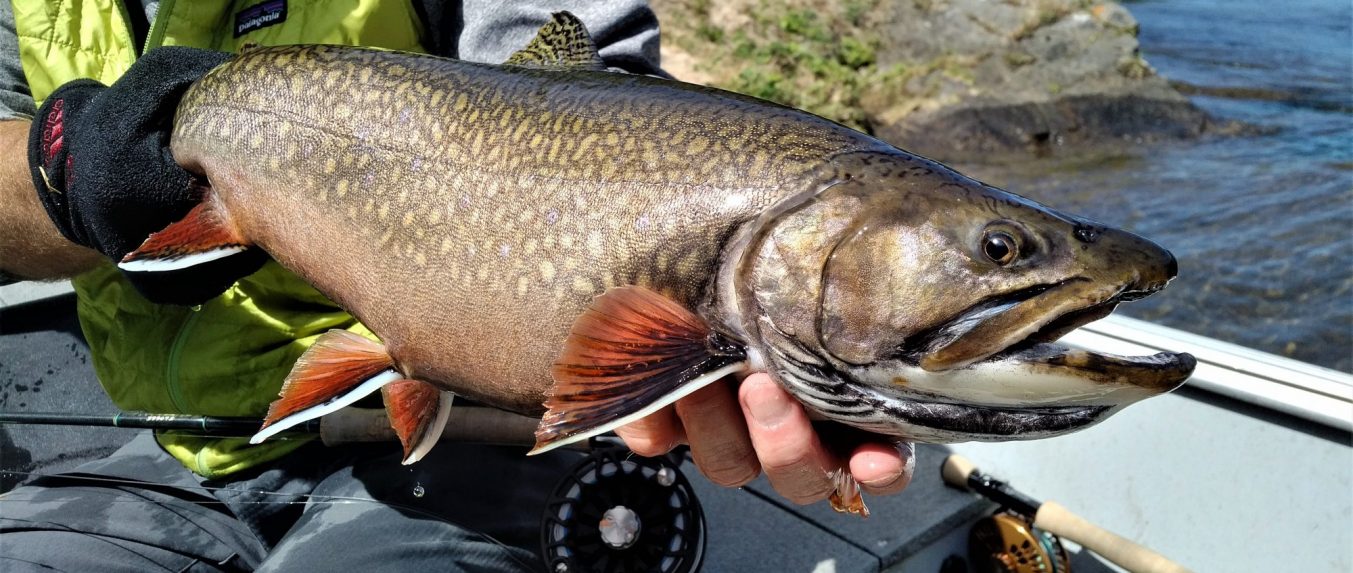
Fly Fishing for Brook Trout
Back to Superior Country BlogBrook trout have been pursued by fly anglers for a long time. The brookie was the native stream trout for much of the eastern portions of United States and Canada, long before rainbow trout brown trout were introduced. So, in the 1800s and early 1900s, when most people first took up fly fishing in New York State, Maine or southern Ontario, it was for brookies.
Fly fishing is the oldest, prettiest and some would say the most sporting way to angle. It is a form of fishing that looks much more difficult than it really is, however. It is also an effective way to catch brook trout.

Fly Rods for Brook Trout
There is truly a staggering array of fly rods on the market, yet most people can get away with one rod to start. A fly rod that is nine feet in length and can take either a 6 or 7 weight fly line will cover most of the needs of a brook trout fly angler in Superior Country. If you are focused only on big water like Lake Nipigon or the Nipigon River, an eight-weight rod will serve you better. A lighter rod like a five weight may be useful on a smaller creek for brook trout, but it won’t handle big fish or large water. Graphite or a graphite composite is the favored material for fly rods as it is lighter and stronger.
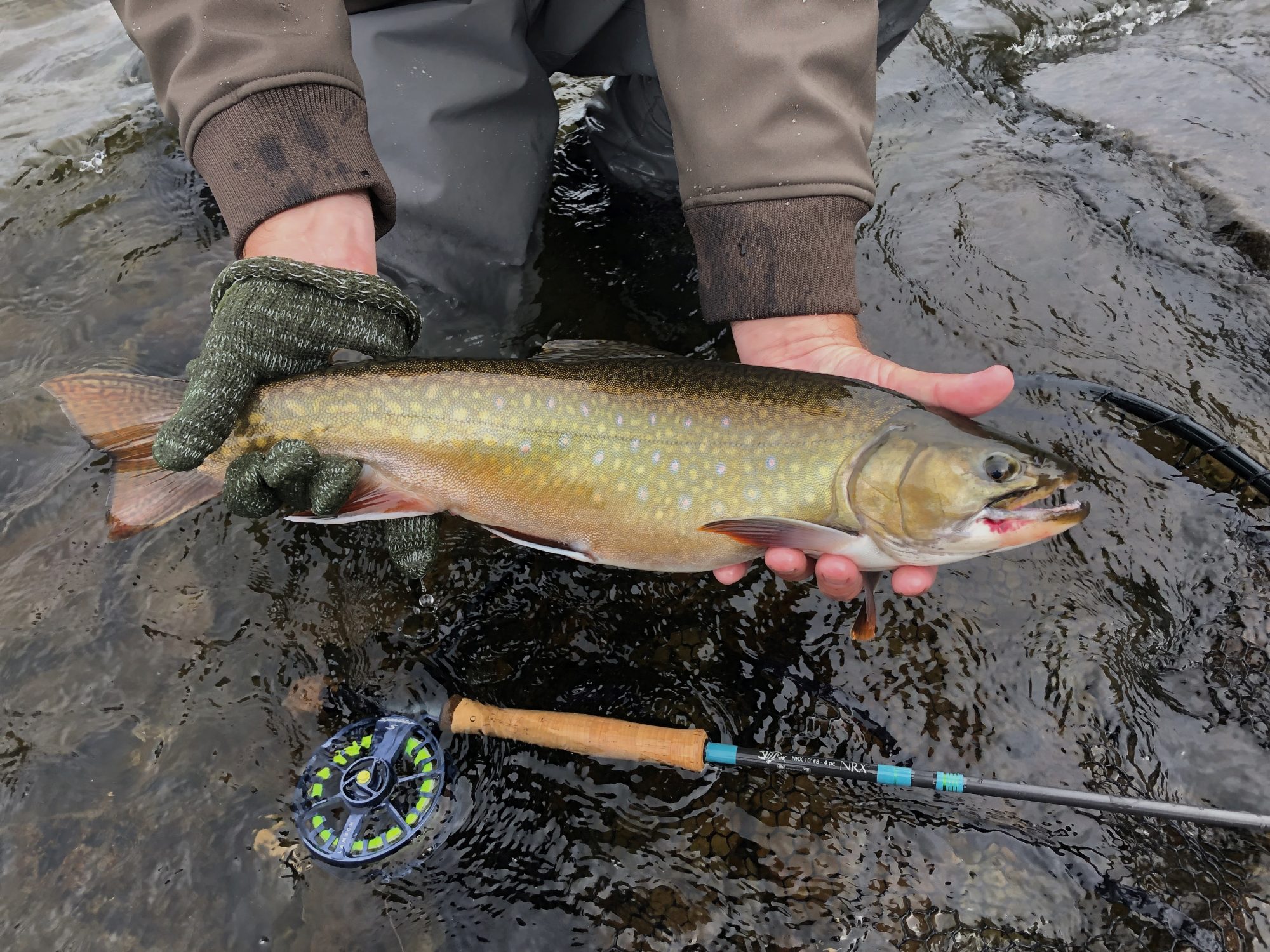
Fly Reels
The basic fly reel is used as a holder for the fly line and does not need to be fancy. An old school fly reel comes with a click drag and requires you “palm” the reel for drag. That’s ok for small stream fish but won’t work when chasing larger fish in heavy water. Newer styles of reel have a large arbor and smooth drag you can adjust. This makes it much better when playing fish. High end reels also are often made of lighter weight materials that won’t wear out your wrist. The fly reel should match the weight of the rod you purchase. There will be guidelines for this on the box the reel comes in.
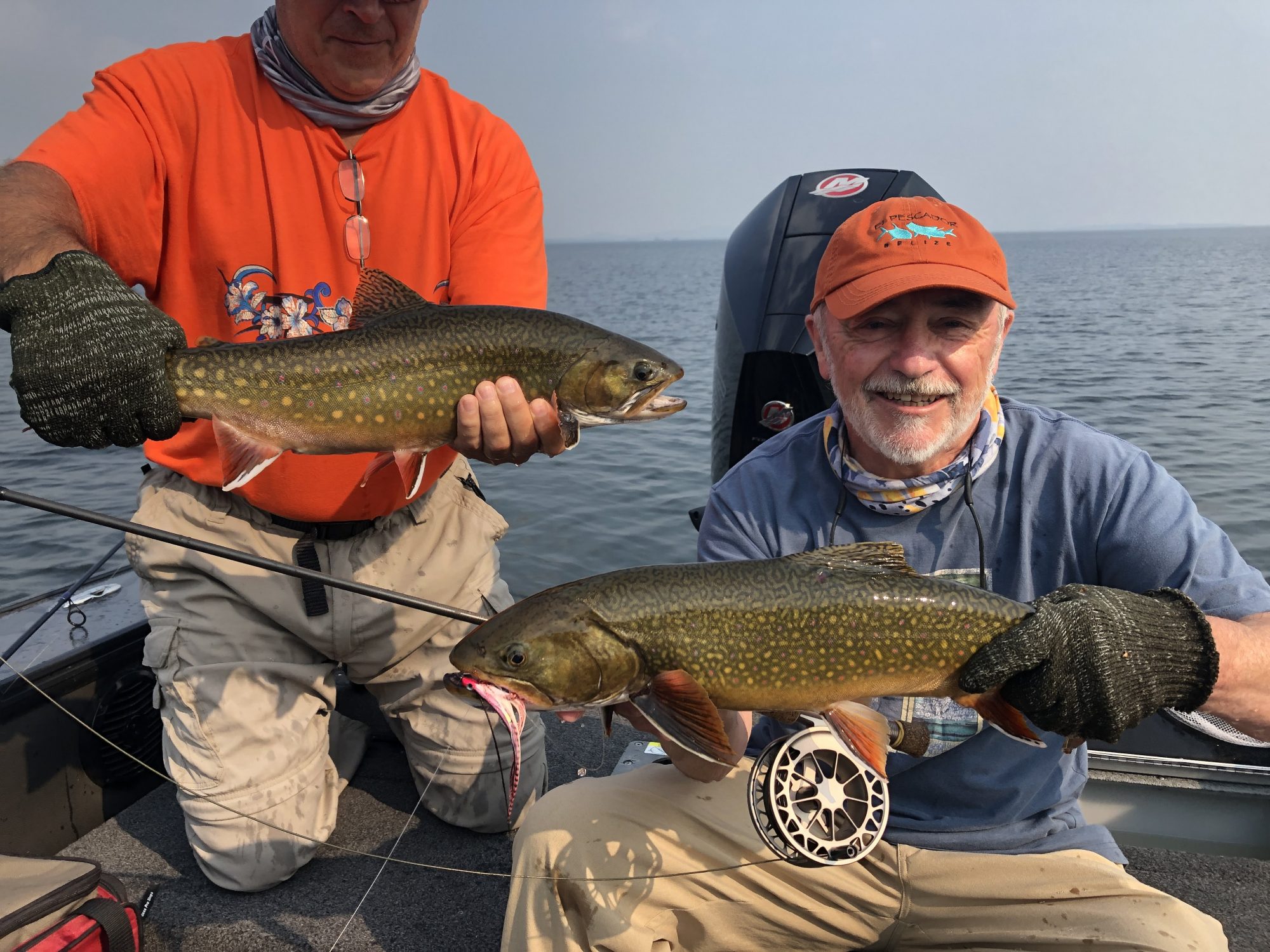
Fly Lines
The fly line is the single most important piece of gear in fly fishing, outside of the actual fly you hook the fish with. The line you use is key to presenting your fly well.
Each fly line has characteristics that will help you cast and effectively fish in a variety of situations. Weight forward is the most common form of line. Think of it as a string that starts out thin and tapers to a thicker portion at the end. The fly line is what makes it possible for you to transfer the energy from the fly rod during the cast down to the fly and get it to the fish.
An average commercial fly line ranges from 70 to 90 feet. This length of line, coupled with the fly line backing, will work in any situation. Despite the romantic concept of fly fishing requiring you cast a lot of line, the reality is most fishing requires a cast of 40 feet or less. For 95% of angling situations, shorter accurate casts will serve you well.

Fly Line Tapers
There are a wide variety of fly line tapers on the market, and they have different uses. However, three different types of tapers will cover most of a fly-anglers needs. Those lines are weight forward, double taper and level.
Weight forward is the most common taper on a fly line and slowly tapers from thin to a thick portion at the end. A more aggressive weight forward taper gives you extra throwing power and helps make casting further easier. A more moderate weight forward taper will allow for a delicate presentation but with less distance. The double fly line taper begins its taper after the first few feet of line. Most of the weight is centered in the middle of the line and then it tapers back to the starting diameter. Some anglers like a double taper as it falls more gently on the water and is better if fish are spooky. Level lines have no taper, they are useful in streams where weight is used to provide the momentum.

Sinking and Floating lines
The three basic types of fly lines are floating, sinking, and sink-tip. Floating lines simply keep the fly on the surface or a wet fly just subsurface. A sinking line will completely submerge. And the sink-tip line means the front end of the line sinks while the rest floats. All three fly-lines are useful when brook trout fishing. For lakes and large rivers, a sinking or sink-tip line is the go-to. There are specialty lines including lines with a fast sink rate to reach trout down deep in lakes and rivers quickly.
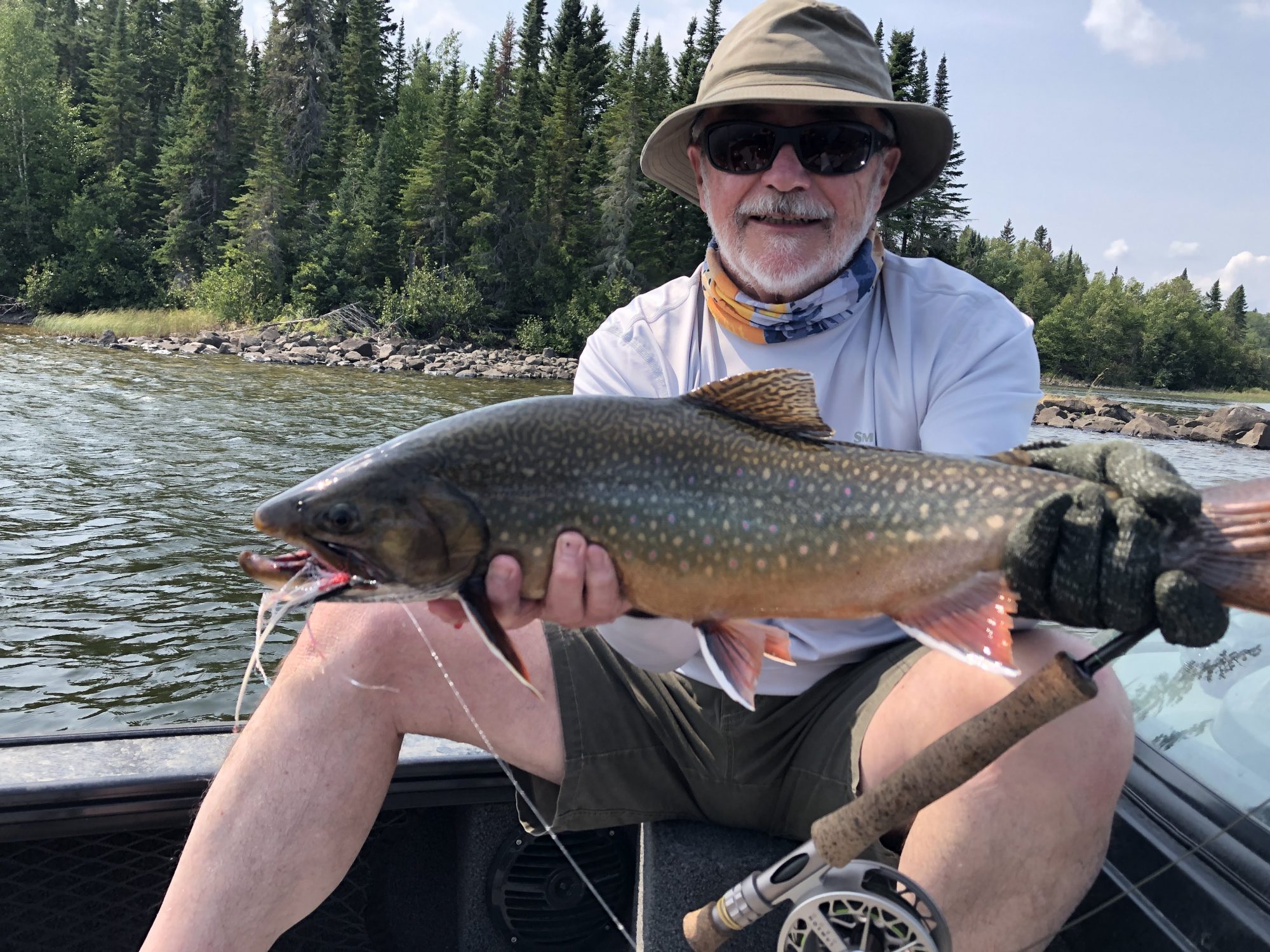
Tippet
The tippet is the lightweight portion of line that you connect the fly to. One end of the tippet is tied to the leader, the other end is the fly. You will want to use the lightest – yet strongest – tippet material possible. Tippet material is generally either monofilament or fluorocarbon. You keep the same leader section but change the tippet size depending on the fishing – and the fish. Most fly anglers carry a selection of tippet spools from four-pound test to 20. For large water brookies like the Nipigon a 12-pound test tippet is not out of line.
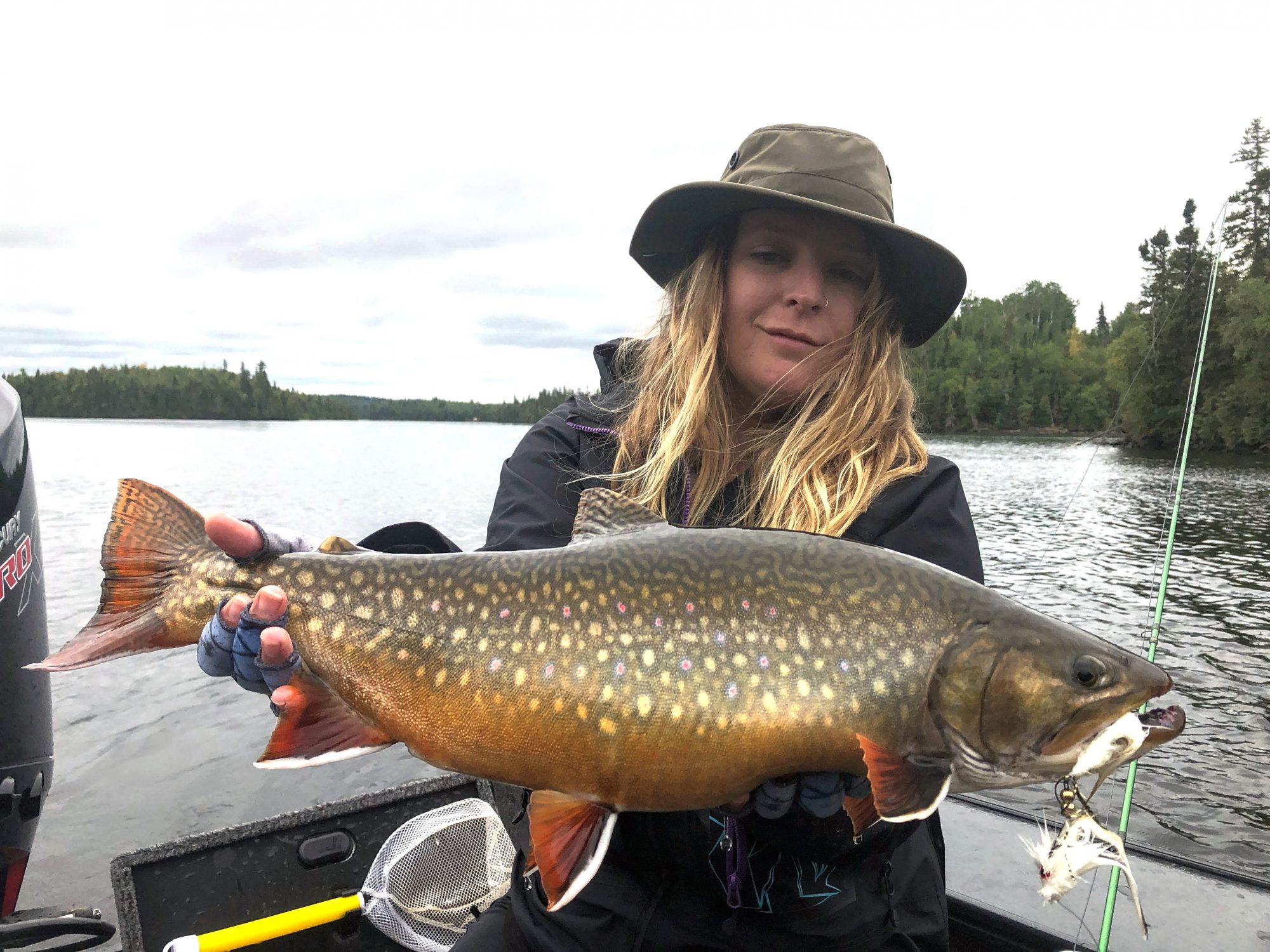
Flies for Brook Trout
The types of flies you can use while fly fishing for brook trout are merely endless. The basic types of flies are dry, wet, streamer and nymph. As a rule, dry flies are used when trout are feeding on the surface. Some of the better all around best dry flies for brook trout include the Stimulator, Elk Hair Caddis and Chernobyl Ant. Wet flies are subsurface and can be used to imitate any number of insects or minnows. Streamers tend to be larger and flashier and are best for larger trout Choosing a favorite brook trout fly is hard, but my personal top three would be a Muddler Minnow, Clouser Minnow and Woolly Buggar. There are dozens of sub-sets of flies, and some are specialty designs. A few have very odd names such as the Sex Dungeon, Butt Monkey, Conehead and Sasquatch. Many of these patterns are on the large side, for bigger trout. Nymph flies are nearly exact copies of the aquatic forms of insects like dragonflies and caddis. A technique called Euro-nymphing can be very effective when the bite is tough, or trout are pressured.
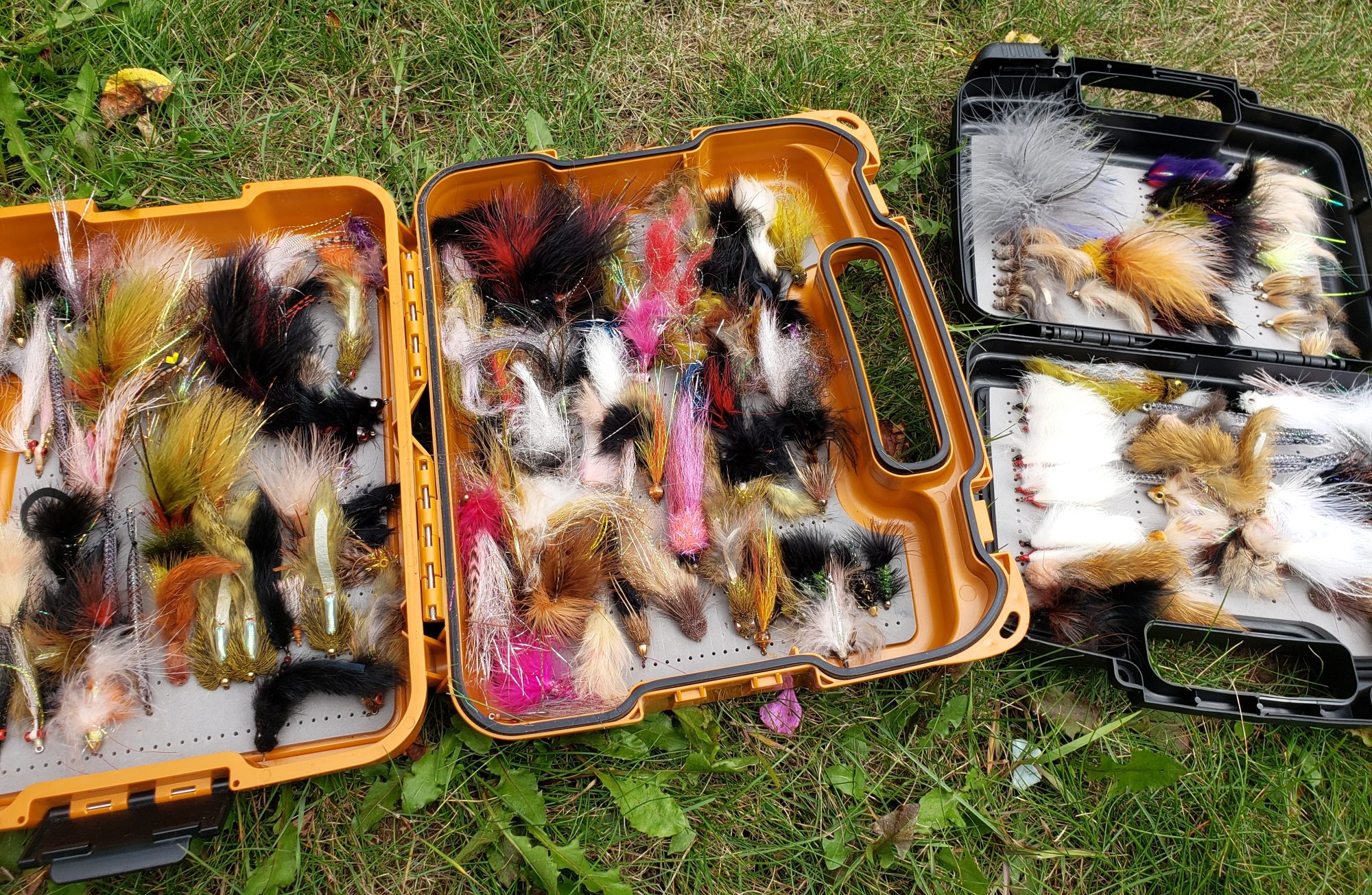
Learning to cast a fly is a whole other article, but keep in mind you don’t need to power the fly out. Let the weight of the fly line do the work and keep the rod over head and the line moving in a nice loop. Practice in your backyard or a park without a fly on the line. Put a book under your rod arm to keep the elbow from flapping. Fly casting should be effortless and graceful.

Catching brook trout on a fly is one of the most satisfying ways to spend a day or week. Come to Superior Country and live the brook trout fly fishing dream.

 Walleye
Walleye Northern Pike
Northern Pike Lake Trout
Lake Trout Brook Trout
Brook Trout Steelhead
Steelhead Salmon
Salmon Smallmouth Bass
Smallmouth Bass Perch
Perch Superior Picnics
Superior Picnics
